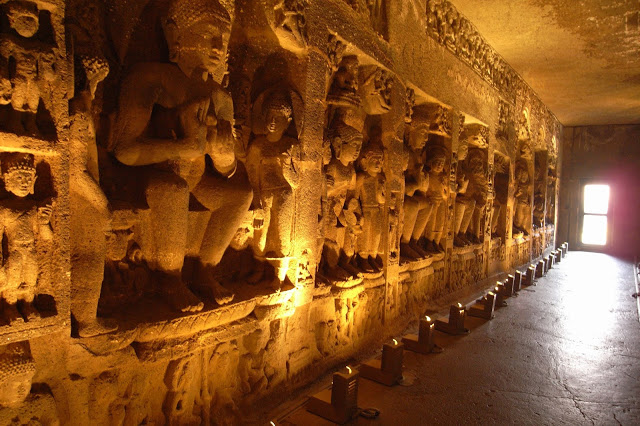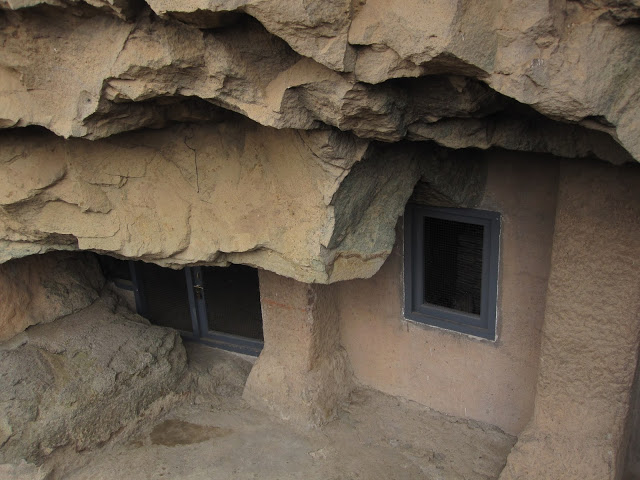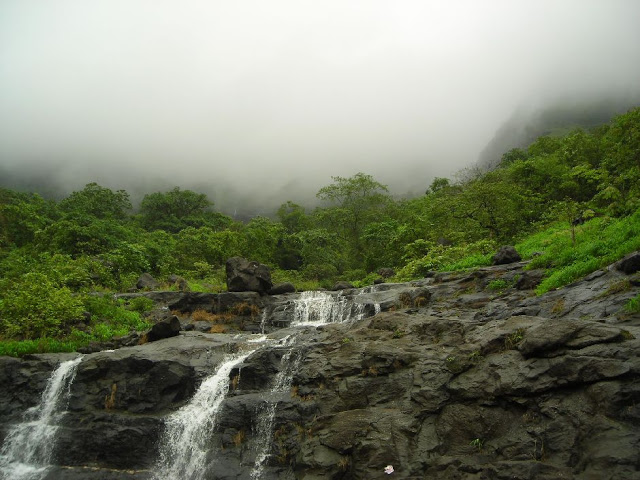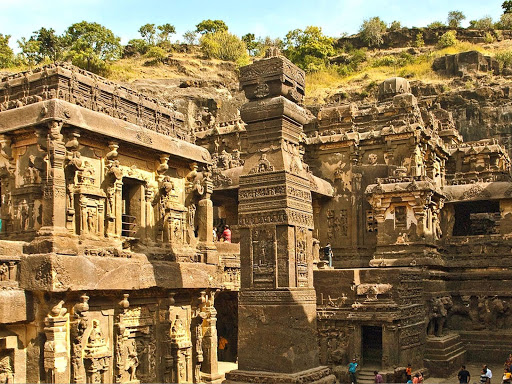When we think of Ghats and Caves, the first thought that might spring to our minds is a tedious and dull journey of exploring these ancient structures with information not more than what we might have read in books or studied earlier but, what seldom seems to intrigue us is what these ghats and caves might have been used for, how they were created and the trade routes that existed long before we did. They tell us about an era forgotten by many and impel us to think upon the history of our land, its unheard stories.

A journey to these historical sites is more than just a day’s picnic and there is so much to learn about these magnificent sites as they convey tales of relics bygone. You would be surprised to know that Maharashtra has the most number of caves namely Ajanta, Ellora, Elephanta, Karla and Kanheri, along with several others, serving as a symbol of varied influences. Each cave has a distinctive form of architecture, divergent features and spectacular art that depicts life during that particular era.

Ghats such as Naneghat, Malshej ghat and Bhor ghat also played a significant role during the ancient days. Each cave is so beautifully designed that it compels us to contemplate what life during those times was really like. An age without Social Media seems unthinkable to us and perhaps, this is why it’s so important that we explore our ancient world, innate in its own way.
A rather fascinating aspect of these beautiful caves is the fact that they were connected by a “trade route” that existed in and around Mumbai about 2000 years ago. Traders and Buddhist monks who travelled down through these stretches of land used these caves on their way to Konkan and Sopara. These caves served not only as residences for the practicing monks but, also offered a number of services to the people and it’s no surprise that like the serais on the silk route, these monasteries were especially built on these trade routes that served as a resting place for traders such as the Caves of Ajanta that date back to 2nd Century BC. The paintings and sculptures in these monuments are one of the finest; the carvings of the Jataka tales being the most popular attraction here.
The Ellora caves are one of the largest rock-cut monastery temple caves in the world, dating back to the 5th-10th Century and the caves of Elephanta, contain a collection of rock art linked to the cult of Lord Shiva. Also known as the ‘city of caves’ they are located on the Elephanta Island in the Mumbai Harbour.
Ellora, Anjata and Elephanta are all UNESCO World Heritage sites.

The Karla caves, carved from a rocky hillside are among the oldest Buddhist cave shrines in India and served as Buddhist monasteries during the 2nd-5th Century. They comprise an extensive collection of beautiful Chaityas (halls) and Viharas (monasteries) that reflect upon a journey of the past, narrating some truly enthralling stories.
Nestled among the reposeful surroundings of the Sanjay Gandhi National Park are more than a hundred Buddhist caves known as the Kanheri caves that date back to the 1st century BC. The size of the prayer hall at both Karla and Kanheri are the largest among all the cave monasteries that have been found, but what takes people by surprise is the fact that these caves have been excavated from a single hill. Isn’t it truly magnificent how they were carved out of a single stone? Another surprising element of these caves is the narration of several unheard stories that date back to thousands of years, through inscriptions carved on the walls and mural work in Ajanta.

Apart from the caves, trade routes also played a significant in the ancient era. Ever imagined walking along a lush green path with towering peaks and bottomless valleys, home to distinct flora and fauna, the mountain air naturally scented and pure with blankets of green neatly spread across us, the peaks hiding behind heavy mists and clouds that happily hoover above our heads as we walk, compelling us to adore the beauty of nature? Such is the Naneghat, Malshej ghat and Bhor ghat that served as dominant trade routes earlier.
About 500 years ago, during the period of the Satvahanas, Naneghat was constructed by breaking the hill near Kurna to Pratishthan on Junaghad road. It is a mountain pass in the Western Ghats near the Junnar district in Maharashtra and was one of the most important trade routes connecting the harbour of Sopara and Kalyan directly to Junnar. You would be surprised to know that Naneghat was used as a tollbooth to collect toll from the traders that passed along this route, hence the name ‘Nane’ (coin) ghat. The unique thumb-like shape of the ghat isn’t easy to miss and one can undoubtedly get a glimpse of it while going through Malshej ghat.

The pinnacle of Varnarlingi is the most distinctly seen spot. The simplest way to reach Naneghat from Pune is to catch a bus from Pune to Junnar, then get down at Junnar and catch another bus heading towards Ghatghar. A one hour walk from there will get you to the top of Naneghat.
Apart from this popular path, one of the oldest routes known as Malshej ghat too, served as a crucial trade route during the ancient era. This route, also known as the ‘land of the waterfalls’, was in use even before the ghat roadways were built and has quite an ancient history connected with the Harishchandragad trade route, around 2000 years ago. A small idol of Lord Ganapati carved in a wall rock while you descend this ghat tells us the consequential historic existence of this route.
Another ghat situated between Karjat and Khandala, known as the Bhor ghat, also has a bit of history that dates back to many years. It was an ancient trade route developed by the Satvahana to connect several ports (Choul, Panvel etc).
The abundance of historical caves and trade routes in India tells about the rich and significant history of our land, of enchanting stories that have been forgotten over the years and of tales unheard. As these monuments stand tall for more than 2000 years, let us take time out of our busy schedules to visit these sites, admire and appreciate their historical significance.

Leave a comment